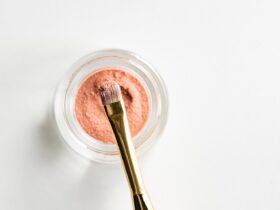Perfume is more than just a fragrance; it’s an experience, a statement, and an art form. And the vessel that delivers this olfactory masterpiece – the perfume atomizer – is an integral part of that experience. While often overlooked, the design of a perfume atomizer is a delicate dance between aesthetics, functionality, and the preservation of the precious liquid within. This article delves into the art of perfume atomizer design, exploring the various elements that contribute to a truly exceptional product.
A Brief History of the Atomizer
The history of the perfume atomizer is intertwined with the evolution of perfume itself. Early perfume application methods were rudimentary, involving dabbing or splashing the fragrance onto the skin. The invention of the atomizer revolutionized this process, allowing for a finer, more controlled, and longer-lasting application. The first atomizers were often complex and expensive, reserved for the wealthy elite. Over time, advancements in manufacturing techniques and materials have made atomizers more accessible, leading to the diverse range we see today.
Early designs often incorporated elaborate glasswork, showcasing the artistry of the glassblowers. These atomizers were not just functional but also decorative objects, proudly displayed on dressing tables. The shift towards more industrial production in the 20th century brought about simpler, more efficient designs, though the emphasis on aesthetics never truly faded.
Form Follows Function: The Core Principles
The primary function of a perfume atomizer is, of course, to dispense the perfume effectively and efficiently. This seemingly simple task requires careful consideration of several factors:
- Atomization Quality: The atomizer should produce a fine, even mist that disperses the fragrance evenly over the skin. Large droplets can lead to uneven application and a short-lived scent.
- Leak-Proof Design: Preventing leaks is crucial for preserving the perfume and avoiding messy spills. This requires precise engineering and high-quality seals.
- Ease of Use: The atomizer should be easy to operate with minimal effort. A smooth, consistent spray mechanism is essential for a positive user experience.
- Durability: The atomizer should be able to withstand repeated use and handling without breaking or malfunctioning.
These functional requirements often dictate the form of the atomizer. For example, the nozzle design plays a critical role in the quality of atomization, while the pump mechanism determines the ease of use.
Aesthetic Considerations: The Art of Visual Appeal
Beyond functionality, the aesthetic appeal of a perfume atomizer is paramount. The atomizer should complement the perfume it contains and reflect the brand’s identity. This is where the art of design truly comes into play.
- Shape and Silhouette: The overall shape of the atomizer can range from sleek and minimalist to ornate and extravagant. The choice of shape often reflects the target audience and the perfume’s personality.
- Materials and Finishes: Glass, metal, and plastic are common materials used in atomizer construction. The choice of material and finish (e.g., polished, matte, textured) can significantly impact the atomizer’s perceived quality and aesthetic appeal.
- Color and Decoration: Color plays a vital role in conveying the perfume’s mood and character. Decoration, such as embossing, engraving, or the addition of crystals, can add a touch of luxury and exclusivity.
- Branding: The brand logo and name are often prominently displayed on the atomizer, reinforcing brand recognition and creating a cohesive brand image.
Designers often draw inspiration from various sources, including architecture, nature, and art. The goal is to create an atomizer that is not only functional but also a beautiful object in its own right.
Materials and Manufacturing: The Backbone of Quality
The choice of materials and manufacturing processes is crucial for ensuring the quality and longevity of the perfume atomizer. Common materials include:
- Glass: Glass is a popular choice for perfume bottles due to its inertness and ability to protect the fragrance from degradation. It is also highly customizable in terms of shape and color.
- Metal: Metal is often used for the pump mechanism and other components that require durability and precision. Aluminum and stainless steel are common choices.
- Plastic: Plastic is a cost-effective option for certain components, such as the nozzle and cap. However, it is important to choose high-quality plastics that are resistant to chemical degradation.
Manufacturing processes can range from traditional glassblowing to modern injection molding. The choice of process depends on the design complexity, production volume, and budget.
The Sustainable Future of Atomizer Design
In recent years, there has been a growing emphasis on sustainability in all aspects of product design, including perfume atomizers. This includes using recycled materials, reducing waste in the manufacturing process, and designing atomizers that are refillable or recyclable. Some brands are experimenting with biodegradable materials and innovative packaging solutions to minimize their environmental impact.
The challenge lies in balancing sustainability with functionality and aesthetics. Consumers are increasingly demanding eco-friendly products, but they are also unwilling to compromise on quality or design. This requires designers to think creatively and develop innovative solutions that meet both environmental and consumer expectations.
Conclusão
The design of a perfume atomizer is a complex and multifaceted art form. It requires a deep understanding of functionality, aesthetics, materials, and manufacturing processes. A well-designed atomizer not only dispenses the perfume effectively but also enhances the overall user experience and reinforces the brand’s identity. As sustainability becomes increasingly important, designers must continue to innovate and find creative solutions that minimize environmental impact without compromising on quality or design. The future of perfume atomizer design lies in the ability to balance these competing demands and create products that are both beautiful and responsible.
Perguntas frequentes (FAQs)
What is the difference between an atomizer and a sprayer?
While the terms are often used interchangeably, an atomizer typically refers to a device that produces a finer mist than a sprayer. Atomizers use pressure to break the liquid into tiny particles, while sprayers may produce larger droplets.
How can I clean my perfume atomizer?
To clean your perfume atomizer, you can flush it with warm water or diluted alcohol. Avoid using harsh chemicals, as they may damage the atomizer. Ensure the atomizer is completely dry before refilling it with perfume.
Can I refill any perfume atomizer?
Not all perfume atomizers are designed to be refillable. Some are sealed and intended for single use only. Look for atomizers with a removable top or a refill port if you want to be able to refill them.
What are the best materials for perfume atomizers?
Glass is generally considered the best material for the bottle itself, as it is inert and does not react with the perfume. Metal components should be made from high-quality materials like stainless steel to prevent corrosion. High-quality plastics can also be used for certain components.
How does the atomizer design affect the scent of the perfume?
The atomizer design primarily affects the application and longevity of the scent. A well-designed atomizer will produce a fine, even mist that disperses the fragrance evenly and allows it to develop properly on the skin. A poor atomizer design may result in uneven application and a short-lived scent.
















Deixe uma resposta